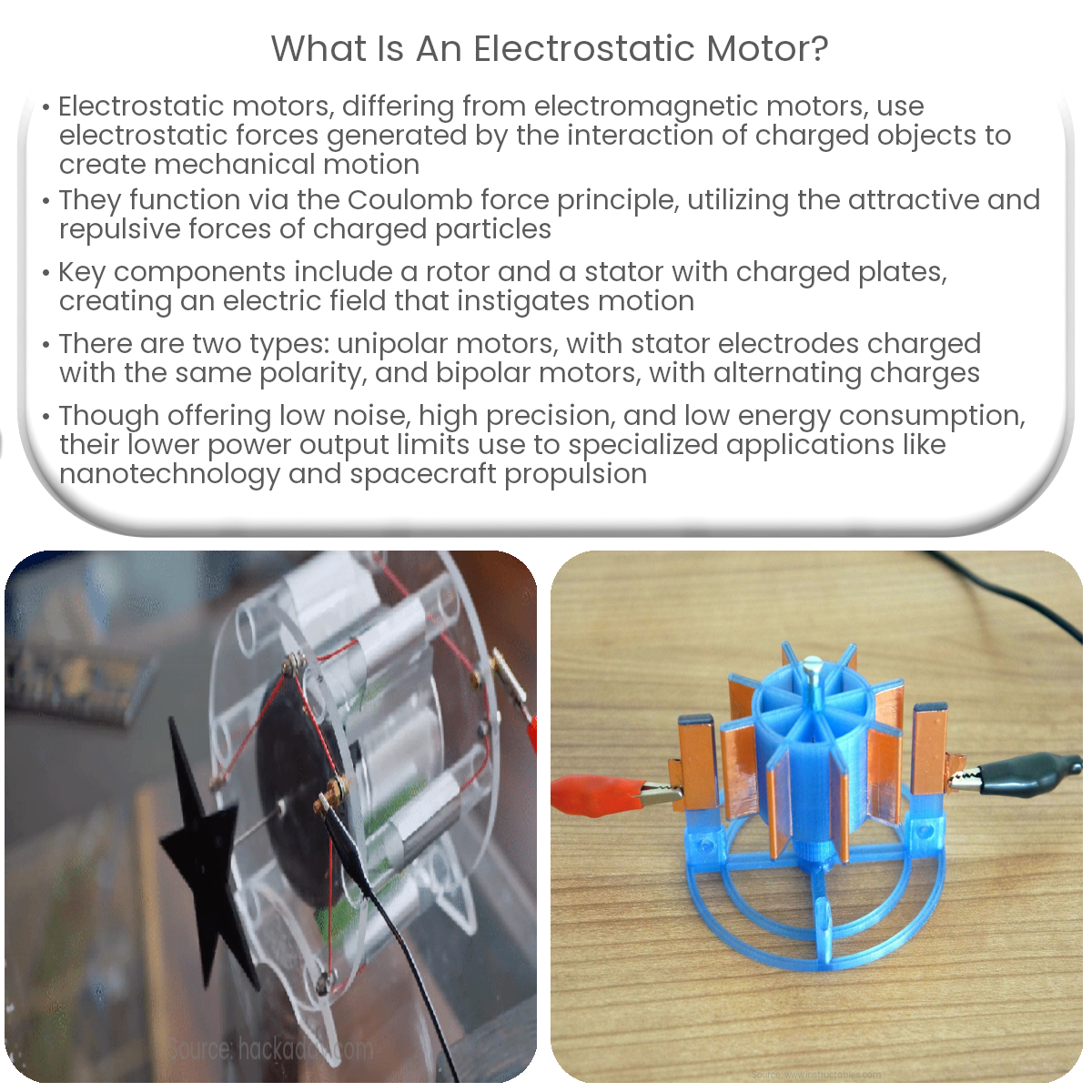An electrostatic motor is a type of electric motor that uses electrostatic forces to generate mechanical motion, instead of electromagnetic forces.
Introduction to Electrostatic Motors
An electrostatic motor is a type of electric motor that utilizes electrostatic forces to generate mechanical motion. This type of motor is distinct from electromagnetic motors, which operate using the interaction of electric currents and magnetic fields. Electrostatic motors rely on the attractive and repulsive forces between charged bodies, making them unique and advantageous for certain applications.
Operating Principle
The basic operating principle of an electrostatic motor is the Coulomb force, which is the force experienced by charged particles due to their electric charges. When two charged objects are brought close to each other, they experience an electrostatic force. If these objects have the same charge, they repel each other; if they have opposite charges, they attract each other. Electrostatic motors exploit these forces to create motion.
Construction and Components
An electrostatic motor typically consists of a rotor and a stator. The rotor is the moving part, while the stator remains stationary. Both rotor and stator have a series of electrodes or plates. These plates are charged, creating an electric field between the rotor and stator. As the rotor’s electrodes align with those of the stator, the electric field causes an electrostatic force to act on the rotor, causing it to rotate.
Types of Electrostatic Motors
- Unipolar motors: In these motors, the stator electrodes are charged with the same polarity, while the rotor remains electrically neutral. The electric field induces charges on the rotor, generating electrostatic forces.
- Bipolar motors: These motors use both positive and negative charges on the stator and rotor electrodes. The alternating charges create an electric field that drives the rotor’s rotation.
Applications and Advantages
Electrostatic motors find use in specialized applications, such as:
- Microelectromechanical systems (MEMS)
- Nanotechnology
- High-precision instruments
- Spacecraft propulsion
Advantages of electrostatic motors include:
- Low noise operation due to the absence of friction and mechanical wear
- High precision and accuracy
- Low energy consumption
- Minimal maintenance requirements
However, electrostatic motors often have lower torque and power output compared to electromagnetic motors, limiting their widespread use in high-power applications.


